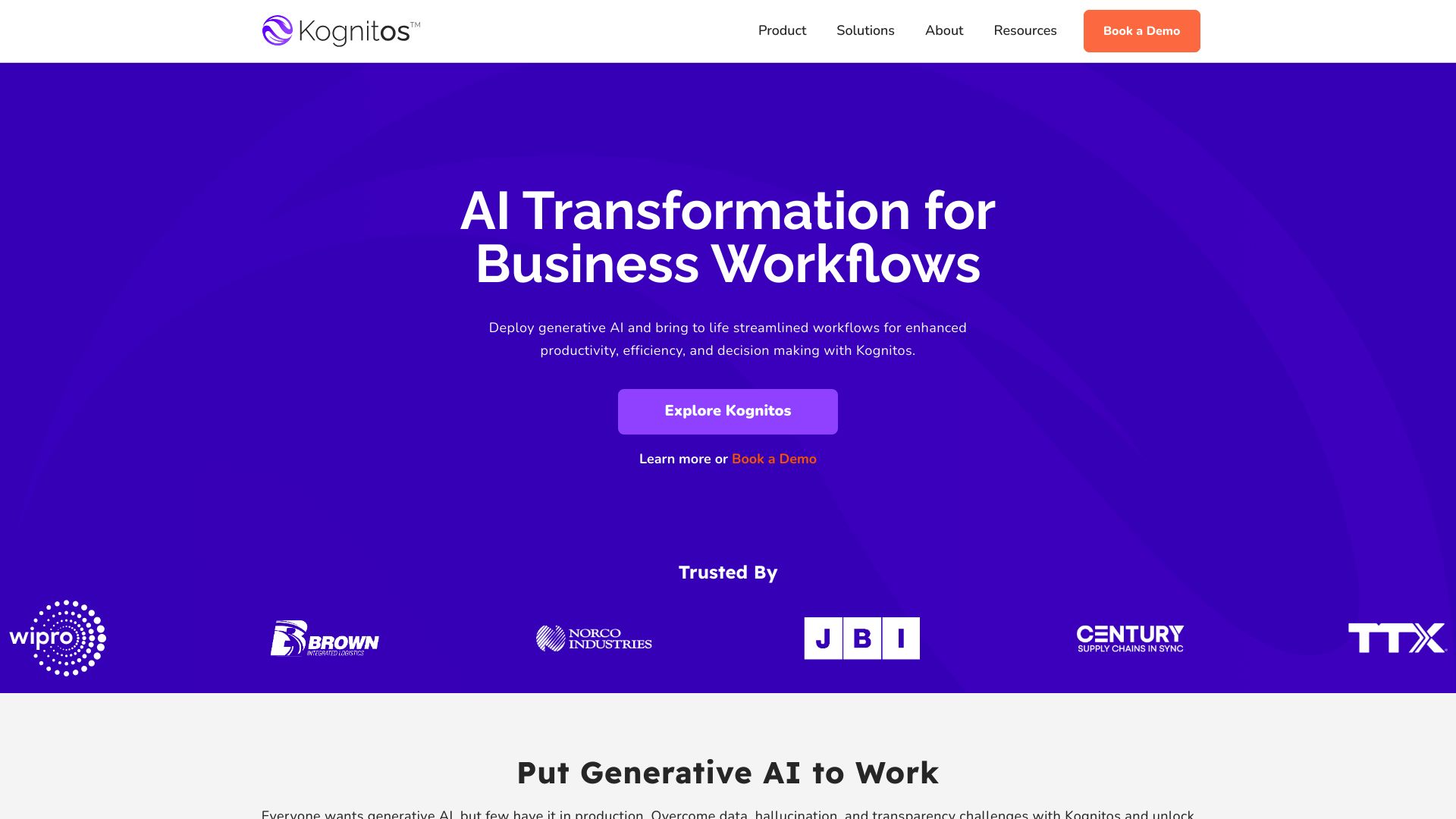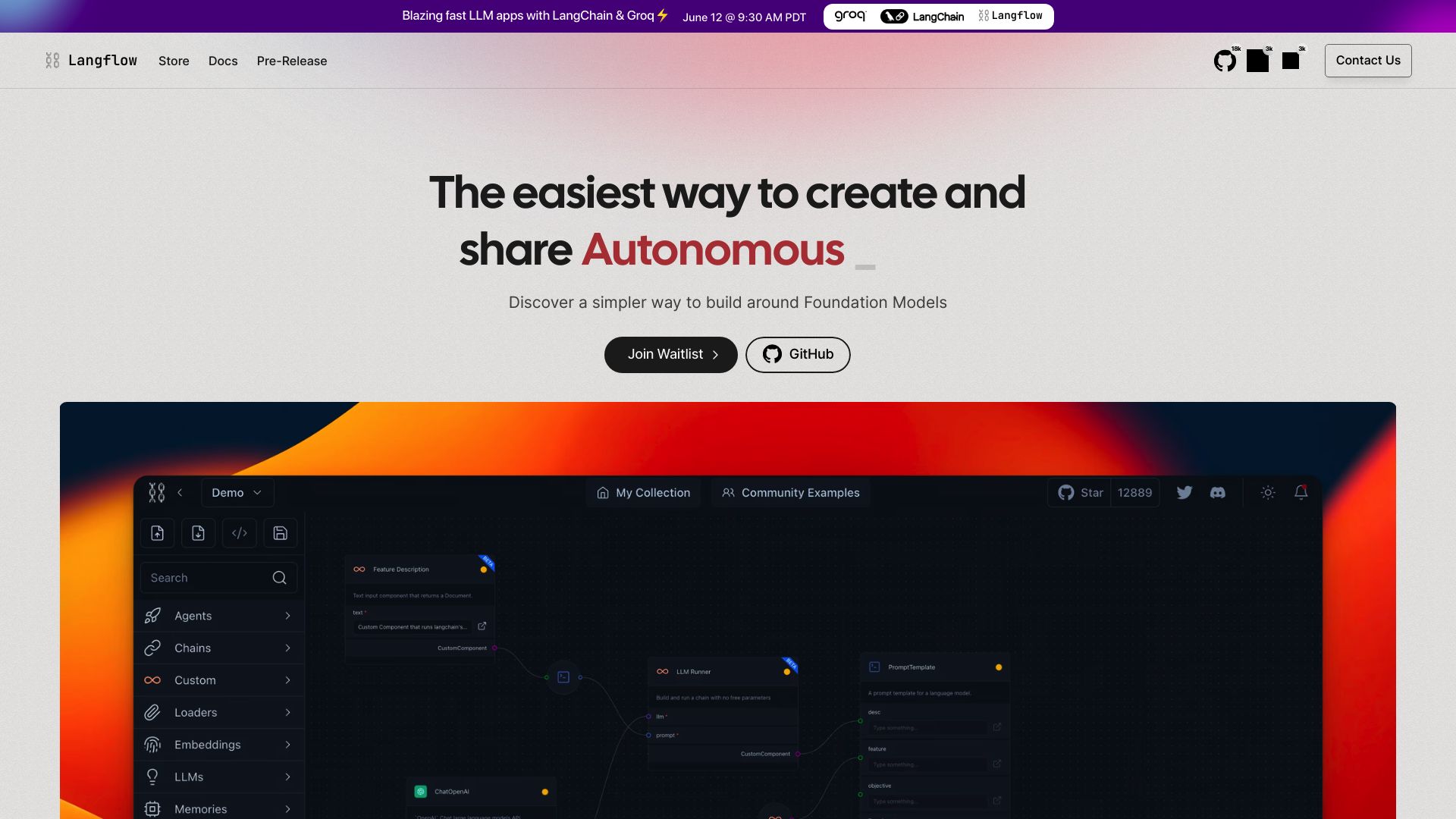Kognitos vs. Langflow: AI Automation Platforms Compared
AI development and automation platforms Kognitos vs. Langflow revolutionize how businesses harness artificial intelligence. Kognitos empowers users to create sophisticated processes using plain English, while Langflow offers a visual drag-and-drop interface for building AI workflows. This comparison dives into their unique approaches, exploring how each platform tackles document processing, workflow automation, and AI application development.
We’ll examine their strengths in areas like natural language processing, integration capabilities, and customization options. By understanding the distinct features and limitations of Kognitos and Langflow, readers will gain valuable insights to make informed decisions about which AI solution best fits their organization’s needs.
Kognitos Overview
Kognitos revolutionizes automation by allowing users to create AI-powered processes using plain English. This innovative approach eliminates the need for complex coding, making sophisticated automation accessible to a broader range of users. Kognitos leverages natural language processing and large language models to interpret user instructions and execute tasks across various business applications.
Kognitos revolutionizes automation by allowing users to create AI-powered processes using plain English… eliminating the need for complex coding, making sophisticated automation accessible to a broader range of users.


The platform excels in document processing, data manipulation, and system integration. Users can automate complex workflows involving tasks like Excel operations, email handling, and Salesforce data management. Kognitos adapts to changes and learns from exceptions, continuously improving its performance over time.
Kognitos offers a cloud-based solution that scales from small businesses to large enterprises. The system provides detailed audit logs, ensuring transparency and compliance in automated processes. While it lacks a traditional visual builder, its natural language interface offers an intuitive alternative for creating and managing automations.
Kognitos offers a cloud-based solution that scales from small businesses to large enterprises. The system provides detailed audit logs, ensuring transparency and compliance in automated processes.
The platform’s AI agents operate autonomously, handling routine tasks and escalating exceptions when necessary. This capability allows businesses to streamline operations while maintaining human oversight. Kognitos integrates with various third-party applications and supports multiple operating systems, offering flexibility in deployment and use.
However, Kognitos may face challenges in highly specialized industries that require extensive customization beyond its natural language capabilities. Additionally, users accustomed to visual programming interfaces might experience a learning curve when adapting to Kognitos’ text-based approach.
Langflow Overview
Langflow provides an open-source platform for building AI applications without extensive coding. The drag-and-drop interface allows users to visually construct complex AI workflows using pre-built LangChain components. This approach democratizes AI development, making it accessible to both technical and non-technical users.
Langflow provides an open-source platform for building AI applications without extensive coding… making it accessible to both technical and non-technical users.


Langflow emphasizes ease of use and flexibility. The platform offers straightforward installation options, including running directly within HuggingFace Spaces. For more advanced users, a robust Command-Line Interface enables fine-tuned control over project settings. Langflow also prioritizes security through enhanced authentication mechanisms and customizable user management.
Langflow emphasizes ease of use and flexibility… Langflow also prioritizes security through enhanced authentication mechanisms and customizable user management.
A key strength of Langflow lies in its extensibility. Users can create custom components using Python scripts, tailoring the platform to specific needs. This feature, combined with the ability to export flows as JSON files or use them as Python objects, provides significant adaptability for various AI applications.
A key strength of Langflow lies in its extensibility… provides significant adaptability for various AI applications.
While Langflow excels in accessibility, it may present a learning curve for those entirely new to AI concepts. Additionally, as a low-code solution, it may not offer the same granular control as high-code alternatives for highly specialized use cases. Scalability for large-scale deployments and intricate workflows remains an area for potential improvement.
Langflow’s vision centers on making AI development inclusive and efficient. By offering a low-code environment with extensive customization options, the platform empowers users across technical backgrounds to leverage AI technologies effectively in their workflows.
Feature Comparison
Kognitos and Langflow offer distinct approaches to AI development and automation. Kognitos enables users to create AI-powered processes using natural language, eliminating complex coding requirements. This plain English interface makes sophisticated automation accessible to a wider range of users. In contrast, Langflow provides a visual drag-and-drop interface for building AI workflows using pre-built LangChain components, catering to both technical and non-technical users.
A key difference lies in their core components. Kognitos excels in document processing, data manipulation, and system integration, allowing users to automate complex workflows involving tasks like Excel operations and Salesforce data management. Langflow, on the other hand, focuses on AI application development using LangChain components, offering greater flexibility for creating custom AI solutions. While Kognitos adapts to changes and learns from exceptions, Langflow allows users to create custom components using Python scripts, providing more granular control over AI workflows.
Regarding security features, Kognitos offers detailed audit logs and supports integration with various third-party applications, implying robust security measures. Langflow emphasizes enhanced authentication mechanisms and customizable user management. However, Kognitos may have an edge in scalability, being built on cloud infrastructure to support large transaction volumes, while Langflow’s scalability for extensive deployments remains an area for potential improvement.
Feature Comparison Table
| Kognitos | Langflow | SmythOS | |
|---|---|---|---|
| CORE FEATURES | |||
| Visual Builder | ❌ | ✅ | ✅ |
| Problem-Solving Capabilities | ✅ | ❌ | ✅ |
| Work as Team | ✅ | ❌ | ✅ |
| Bulk Work | ✅ | ❌ | ✅ |
| Agent Work Scheduler | ✅ | ❌ | ✅ |
| SECURITY | |||
| Constrained Alignment | ❌ | ✅ | ✅ |
| Data Encryption | ✅ | ❌ | ✅ |
| IP Control | ❌ | ❌ | ✅ |
| COMPONENTS | |||
| Foundation AIs | ✅ | ❌ | ✅ |
| Zapier APIs | ❌ | ✅ | ✅ |
| All other APIs, RPA | ✅ | ❌ | ✅ |
| Data Lakes | ❌ | ✅ | ✅ |
| DEPLOYMENT OPTIONS (EMBODIMENTS) | |||
| Deploy as API | ✅ | ❌ | ✅ |
| Deploy as Webhook | ❌ | ✅ | ✅ |
| Production Domains | ✅ | ❌ | ✅ |
| API Authentication (OAuth + Key) | ✅ | ❌ | ✅ |
| Deploy as Site Chat | ❌ | ❌ | ✅ |
| Deploy as GPT | ❌ | ❌ | ✅ |
| DATA LAKE SUPPORT | |||
| Hosted Vector Database | ❌ | ✅ | ✅ |
| Sitemap Crawler | ❌ | ❌ | ✅ |
| YouTube Transcript Crawler | ❌ | ❌ | ✅ |
| URL Crawler | ❌ | ❌ | ✅ |
| PDF Support | ✅ | ❌ | ✅ |
Best Alternative to Kognitos and Langflow
SmythOS emerges as a superior alternative to Kognitos and Langflow, offering a comprehensive AI automation platform that combines ease of use with powerful features. Our platform stands out by providing a visual drag-and-drop interface that simplifies the creation of complex AI workflows without sacrificing functionality.
Unlike Kognitos’ focus on natural language automation or Langflow’s emphasis on LangChain components, SmythOS delivers a versatile ecosystem supporting a wide range of AI models and integrations. We enable users to build sophisticated multi-agent systems that can collaborate on complex tasks, a capability not prominently featured in either Kognitos or Langflow.
SmythOS delivers a versatile ecosystem supporting a wide range of AI models and integrations… enabling users to build sophisticated multi-agent systems that can collaborate on complex tasks
SmythOS excels in deployment flexibility, offering options to deploy agents as APIs, webhooks, scheduled tasks, or even GPTs. This versatility surpasses the deployment capabilities of both Kognitos and Langflow, allowing for seamless integration into various business processes and technologies.
Our platform’s robust security features, including constrained alignment and data encryption, ensure that AI agents operate within defined parameters while protecting sensitive information. These critical security measures give SmythOS an edge over Kognitos and Langflow, especially for enterprise-level deployments where data protection is paramount.
With SmythOS, users gain access to advanced features like hosted vector databases, multimodal support, and extensive API integrations, enabling the creation of AI solutions for virtually any use case. Whether you’re automating customer service, enhancing data analysis, or developing intelligent decision-making systems, SmythOS provides the tools and flexibility to bring your AI vision to life efficiently and effectively.
Conclusion
Kognitos and Langflow offer unique approaches to AI development and automation, each with distinct strengths. Kognitos excels in natural language-driven automation, making complex processes accessible to a wide range of users. Langflow’s visual drag-and-drop interface and pre-built LangChain components provide a low-code environment for AI application development.
While both platforms have their merits, SmythOS emerges as the superior choice for businesses seeking comprehensive AI solutions. Our platform combines the best of both worlds — an intuitive visual builder with the power of natural language processing. SmythOS offers unparalleled flexibility with support for over 300,000 integrations, allowing users to create sophisticated AI workflows that seamlessly connect to various data sources, APIs, and AI models.
SmythOS stands out with its ’Create Once, Deploy Anywhere’ philosophy, enabling users to deploy AI agents across multiple platforms effortlessly. This versatility, combined with our robust security features, scalability, and support for multi-agent collaboration, makes SmythOS the ideal choice for businesses of all sizes looking to harness the full potential of AI.
Ready to revolutionize your AI development process? Explore our diverse range of AI-powered agent templates to jumpstart your journey. For a deeper dive into SmythOS’s capabilities, check out our comprehensive documentation. Take the first step towards AI-powered success — create your free SmythOS account today and experience the future of AI automation.
Last updated:
Disclaimer: The information presented in this article is for general informational purposes only and is provided as is. While we strive to keep the content up-to-date and accurate, we make no representations or warranties of any kind, express or implied, about the completeness, accuracy, reliability, suitability, or availability of the information contained in this article.
Any reliance you place on such information is strictly at your own risk. We reserve the right to make additions, deletions, or modifications to the contents of this article at any time without prior notice.
In no event will we be liable for any loss or damage including without limitation, indirect or consequential loss or damage, or any loss or damage whatsoever arising from loss of data, profits, or any other loss not specified herein arising out of, or in connection with, the use of this article.
Despite our best efforts, this article may contain oversights, errors, or omissions. If you notice any inaccuracies or have concerns about the content, please report them through our content feedback form. Your input helps us maintain the quality and reliability of our information.
